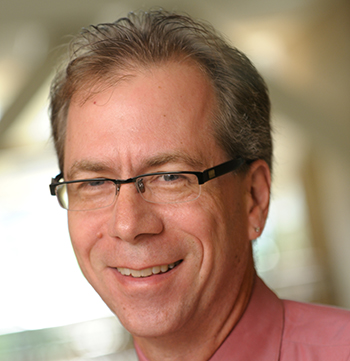Article

University of Illinois aerospace engineering professor Scott R. White, an innovator of self-healing and self-regulating materials, died Monday, May 28, of cancer at age 55.
White was recognized globally as an expert in autonomous materials—materials that can adapt or respond on their own. His research group at the Beckman Institute for Advanced Science and Technology at the U. of I. developed self-healing plastics, electronics, batteries and coatings; coatings and materials that indicate when they are damaged or strained; self-destructing devices to reduce electronic waste; and many other innovations to make materials safer and more reliable on both the micro and macro scale.
“Scott worked at the forefront of research in self-healing materials. Yet along with a brilliant mind, persistence, tenacity and foresight were some of the traits that made Scott who he was,” said Jeffrey S. Moore, the director of the Beckman Institute and a longtime collaborator of White. “Scott had been fighting cancer over a number of years, but throughout this process, he managed to forge ahead in his research pursuits. He cared deeply about his students and pushed them to reach their best. After every big paper he would start the next meeting by saying, ‘Don’t rest on your laurels.’”
White developed several types of self-healing and adaptive materials. For example, he designed materials embedded with microcapsules that rupture when cracked or damaged, filling the cracks and “healing” the plastic or circuit. He also developed microcapsule technology to make lithium-ion batteries longer-lasting and less likely to rupture or burst into flame.
Not content to be limited to one self-healing pathway, White’s group developed vascularized materials—composites filled with microfluidic channels, much like a biological circulatory system. The vasculature enabled his group to further develop plastics that not only heal cracks, but also can regenerate missing portions. See a video of White discussing the work.
White’s group also explored the use of mechanophores—materials that change properties under mechanical stress—to develop polymers and coatings that change colors to indicate damage, strain, cracks or scratches. Most recently, the group developed a polymer-curing process for manufacturing strong, lightweight parts for airplanes or vehicles using tens of millions of times less energy.
White earned a doctorate in engineering mechanics at the Pennsylvania State University in 1990, joining the faculty at the U of I. the same year. He held more than 40 patents and co-founded two startup companies. He received widespread recognition for his work, including a Humboldt Research Award in 2013, the American Society for Composites Outstanding Research Award in 2014, and Scientific American magazine's “SciAm 50” award in 2007. He also received multiple teaching and mentorship awards for his work with students at Illinois.
White is survived by his wife Nancy Sottos, a professor of materials science and engineering, three children, two grandchildren and his parents.
Beckman Institute for Advanced Science and Technology